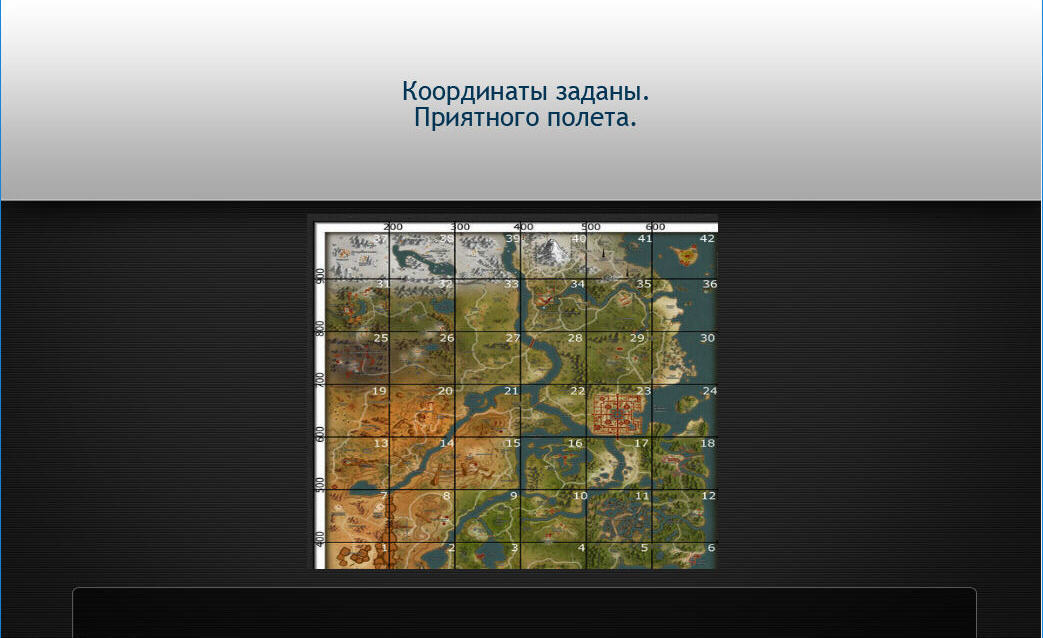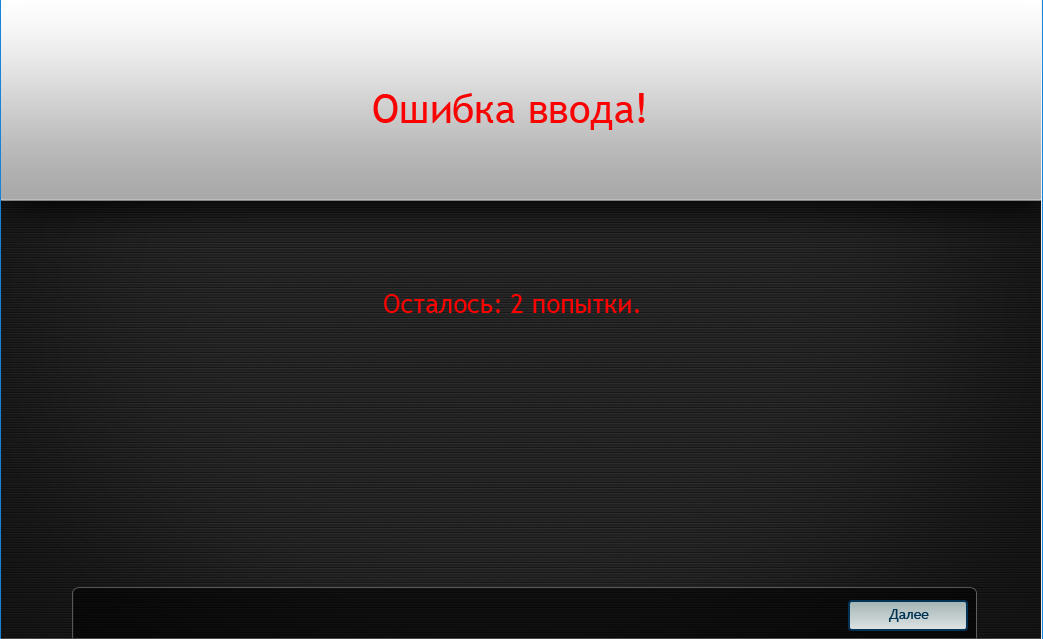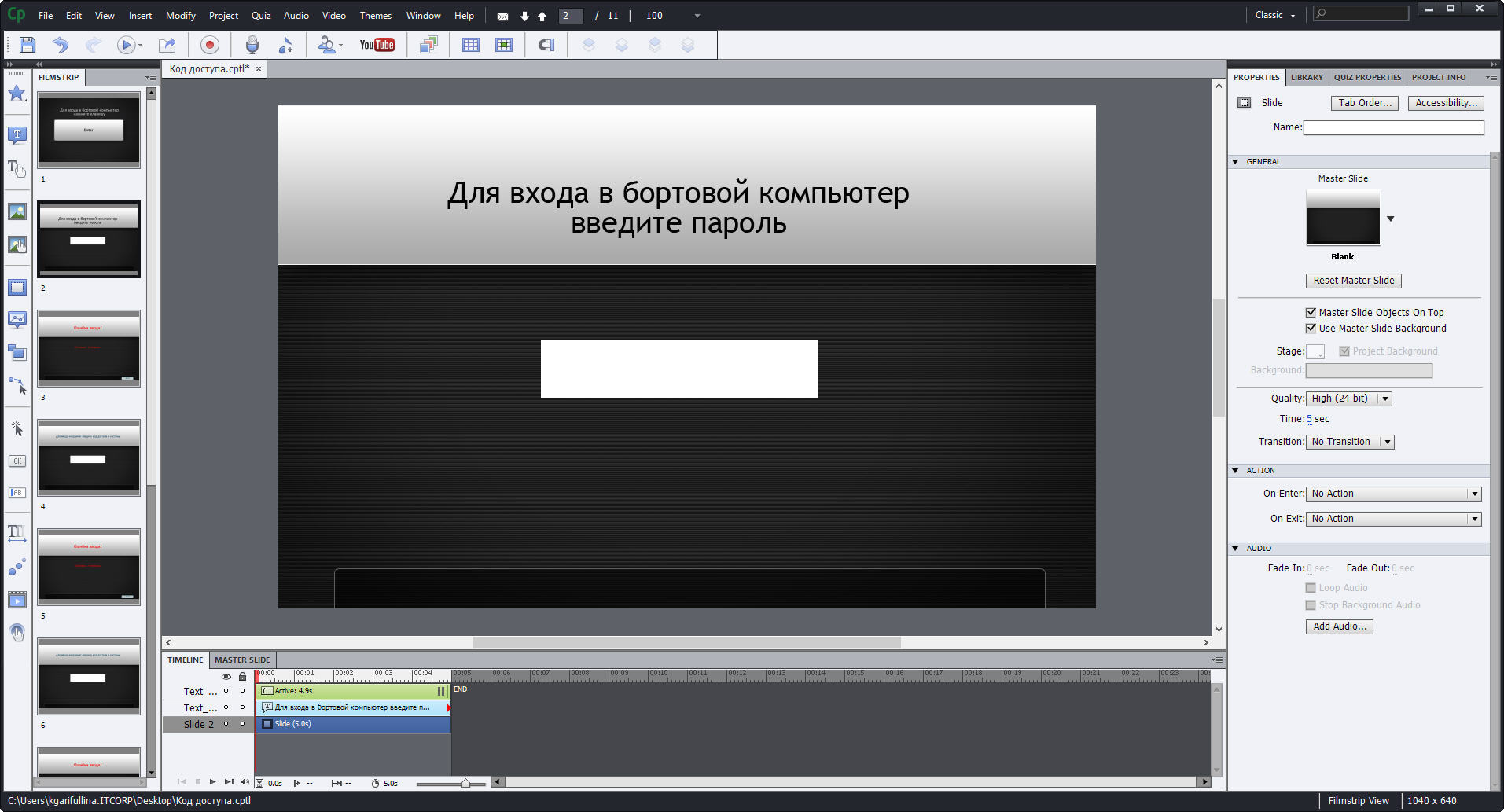Using Adobe Captivate for Live Action Role-Playing Games
In role-playing games of live action such as pavilion / desk games, or in quests on a space theme (or any other technology-related), you can use computers for greater immersion and atmospheric.
For example, to create a cabinet role-playing game based on the FireFly series, I needed to create a model of an “on-board” computer. I took my laptop, wrapped it in black cloth, sealed with black tape all the keys except letters, numbers and Enter, and deployed a full-screen monitor emulation “spacecraft control system”.
To implement the idea and create emulation tool Adobe Captivate is very suitable.

In fact, I needed to create a beautiful sequence of requests from the “On-board computer system” and windows into which I had to enter access codes and coordinates. Creation time was limited, and I did not bother with designer refinements.

I uploaded the video clip in * .exe format, removing the scroll bar and the corresponding buttons, although the option in * .html would also be suitable.
Captivate allows you to implement an algorithm with input errors, that is, I had to, with every incorrect attempt to enter a password / code, display a message about the number of remaining attempts and prompts.

Using the built-in capabilities of the tool, it is very convenient to hang certain actions on the transition buttons, for example, returning to the main window or jumping to a slide.

The timeline of the slide is set in the Timeline field, and you can also lock the slide in a stationary state before pressing a certain key.
The game was held in 2014 and was a success. There were 4 runs.
For example, to create a cabinet role-playing game based on the FireFly series, I needed to create a model of an “on-board” computer. I took my laptop, wrapped it in black cloth, sealed with black tape all the keys except letters, numbers and Enter, and deployed a full-screen monitor emulation “spacecraft control system”.
To implement the idea and create emulation tool Adobe Captivate is very suitable.
- The sequence was simple:
- Use the hints to find the password for the on-board computer control system
- Enter the password in the input field and press the Enter key.
- If the input fails, display a window with a warning and the number of remaining attempts.
- If the password is entered correctly, open a window with a hint.
- Press the button to go to the coordinate input window.
- Enter latitude coordinates.
- Entering longitude coordinates.
- If you enter one value erroneously, display the final warning message about the danger.
- With the correct input of coordinates - display a message with a map of the area.

In fact, I needed to create a beautiful sequence of requests from the “On-board computer system” and windows into which I had to enter access codes and coordinates. Creation time was limited, and I did not bother with designer refinements.

I uploaded the video clip in * .exe format, removing the scroll bar and the corresponding buttons, although the option in * .html would also be suitable.
Captivate allows you to implement an algorithm with input errors, that is, I had to, with every incorrect attempt to enter a password / code, display a message about the number of remaining attempts and prompts.

Using the built-in capabilities of the tool, it is very convenient to hang certain actions on the transition buttons, for example, returning to the main window or jumping to a slide.

The timeline of the slide is set in the Timeline field, and you can also lock the slide in a stationary state before pressing a certain key.
The game was held in 2014 and was a success. There were 4 runs.
